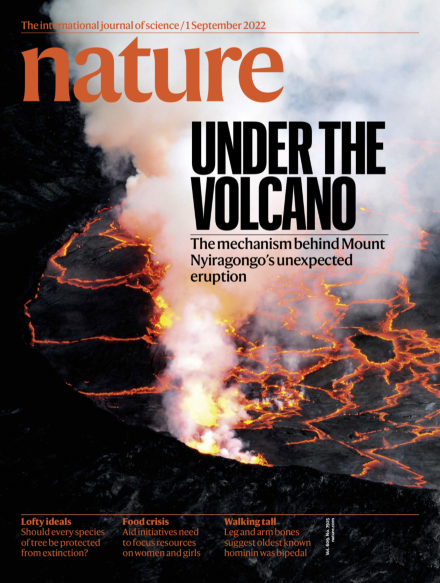Newly published study in Nature: Precursor-free eruption triggered by edifice rupture at Nyiragongo volcano
Published on Wednesday August 31, 2022

On 22 May 2021 shortly before 19:00 (local time), Nyiragongo volcano eastern Democratic Republic of the Congo (DRC) started to erupt, with lava outbursts out from the flank of the volcano devastating a densely populated area. The onset of the eruption was quickly followed by an intense seismic sequence lasting several days, adding to the panic and confusion already created by the unanticipated eruption.
In this article, an international team of scientists shows that this eruption could not have been predicted, lacking all typical precursory signals such as changes in seismicity, ground deformation or gas emissions. A retrospective analysis of the seismic data shows that the first events marking an unusual activity started less than 40 min before the appearance of the first lava flows.
Being only the third known eruption of Nyiragongo after those that occurred in 1977 and 2002, this is the first ever eruption of this volcano monitored by dense instrument networks on the ground. While the eruption itself only lasted several hours, the intense seismic sequence migrated towards the south below the city of Goma and then underneath northern Lake Kivu, translating the intrusion of an enormous volume of magma (243 million m3) at shallow depth (less than 500 m from the surface). This dyke intrusion raised concerns of the possibility of an effusive eruption within the cities of Goma (DRC) and Gisenyi (Rwanda), a phreatomagmatic eruption or the potential risk of a limnic eruption of Lake Kivu, leading the authorities to proceed to an evacuation of parts of the city. The study highlights that these catastrophic scenarios, while fortunately not occurring in 2021, may be more likely than previously thought, calling for their adequate consideration in risk assessment and emergency planning.
The study has been carried out in the context of a more than 15-years long collaboration between the Goma Volcano Observatory (DRC), the Royal Museum for Central Africa (Belgium), the European Center for Geodynamics and Seismology (Luxembourg) and the National Museum for Natural History (Luxembourg).
The full paper can be found open-access under the following link:
https://www.nature.com/articles/s41586-022-05047-8
A related Behind the paper story can be found under the following link: https://go.nature.com/3cw6ypA